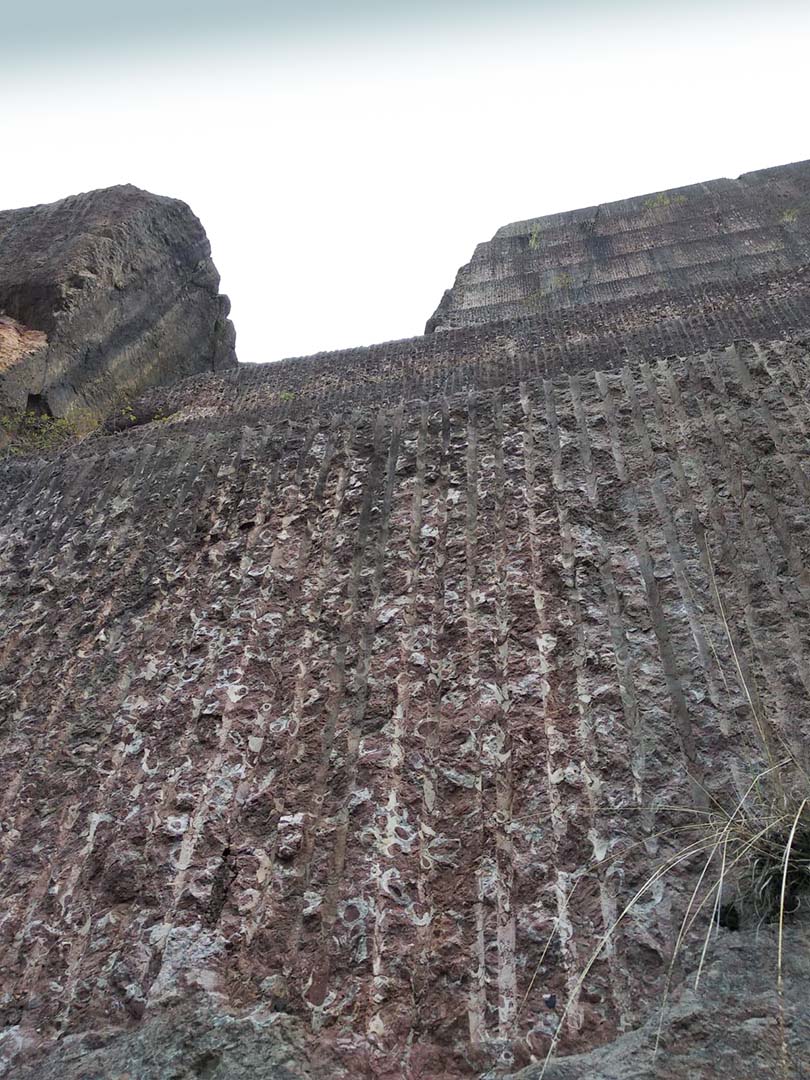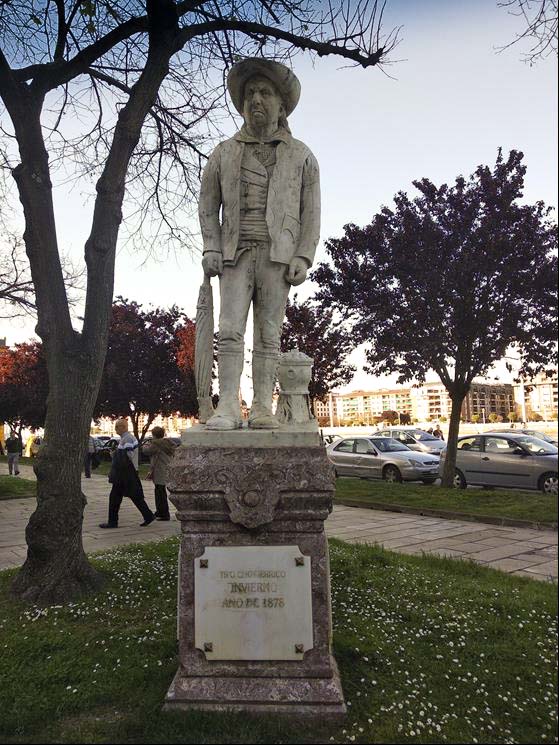
Fountain in the sacristy of the Basilica of Begoña (Bilbao, Spain).
Local native name
Year designation
Lithology
Aesthetics
Geological settings
Aptian-Albian. Shallow tropical platform – Calizas de Santimamiñe Unit –Basque-Cantabrian Basin.
Location
Gautegiz Arteaga and Ereño
Fountain in the sacristy of the Basilica of Begoña (Bilbao, Spain).
The world's best-known Basque red limestone
The Romans were the first to recognise the ornamental value of Red Ereño; a votive ara (altar) and a funerary cippus (pedestal) carved in this stone were found at the Basque site of Forua (1st century). The Romans were also the first to export this stone to the site of Iruña Veleia, about 100 km from the area of the natural outcrop. It is distinctive of the urban landscape of the main Basque cities, such as Bilbao and Gernika. In many constructions it is used for special elements for example the numerous holy water fonts in churches in the region, such as the church hermitage of San Juan de Gaztelugatxe. During the last centuries, it was used in numerous buildings in Spain (Toledo Cathedral, Murcia Parliament, etc.). This red limestone was also exported to other European countries (paving of St. Peter’s Basilica, Vatican, Italy) and America (Colon Theatre, Argentina). The largest quarry is the Cantera Gorria (Red Quarry) in the town of Gautegiz Arteaga, an emblematic site that was declared a Historical and Geological Heritage site. In the Basque Country, stone is linked to intangible heritage through rural sports such as stone lifters (harrijasotzaileak) or stone borers (harri-zulatzaileak).
- Author(s)
Laura Damas Mollá.
Departamento de Geología. Facultad de Ciencia y Tecnología. Universidad del País Vasco. Barrio Sarriena s/n. 48940. Leioa. Bizkaia. Spain


